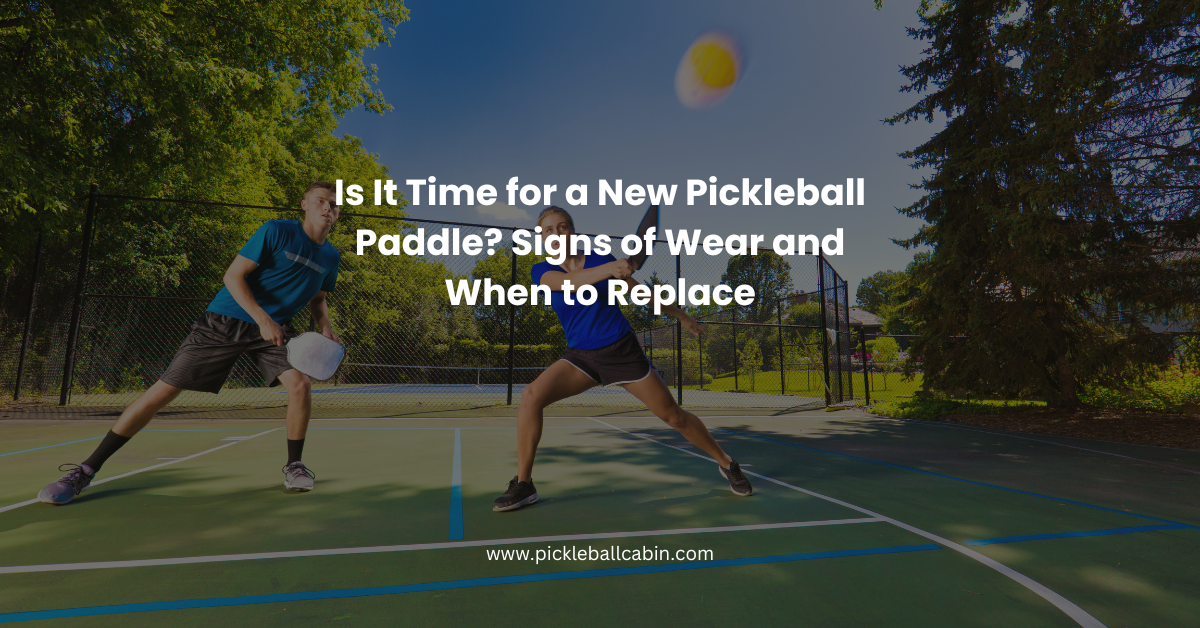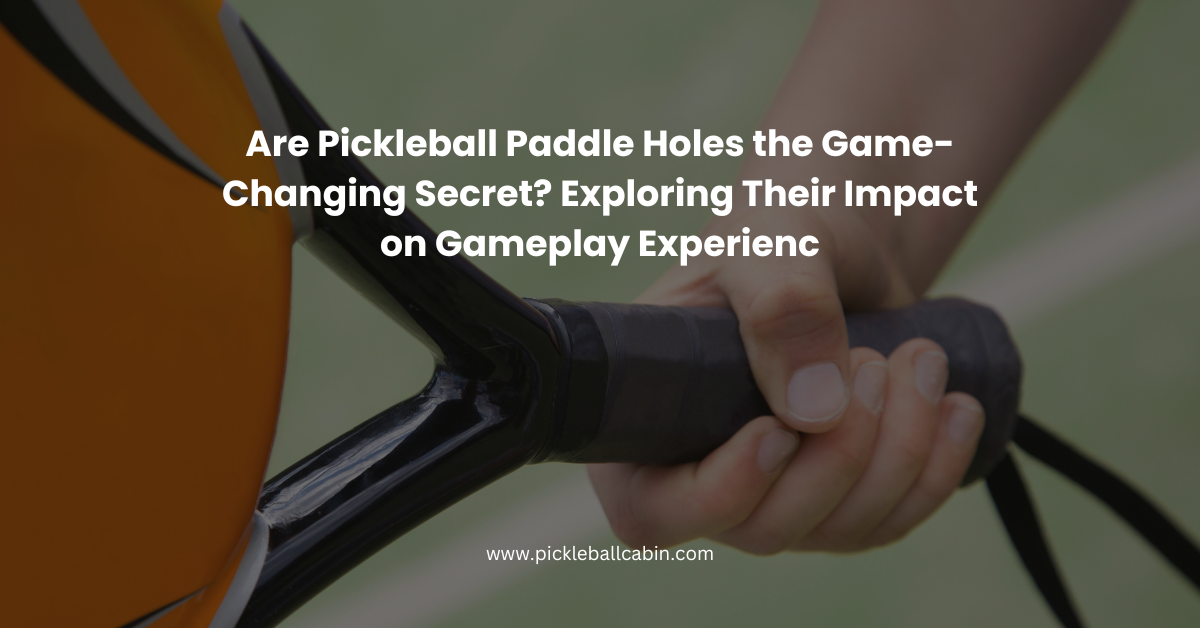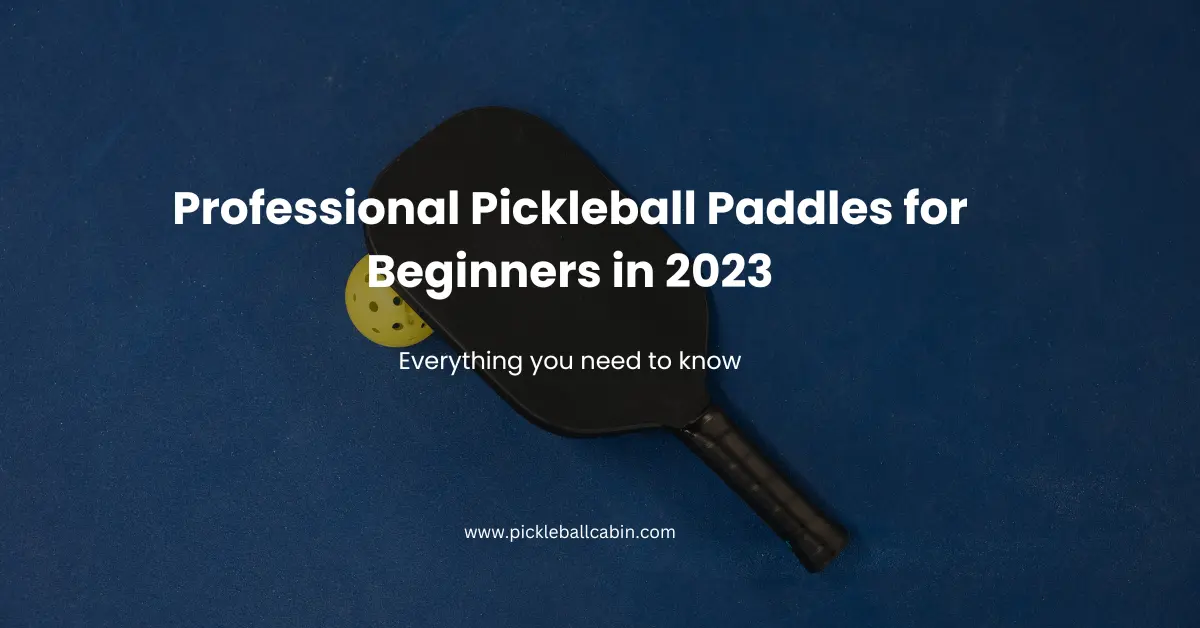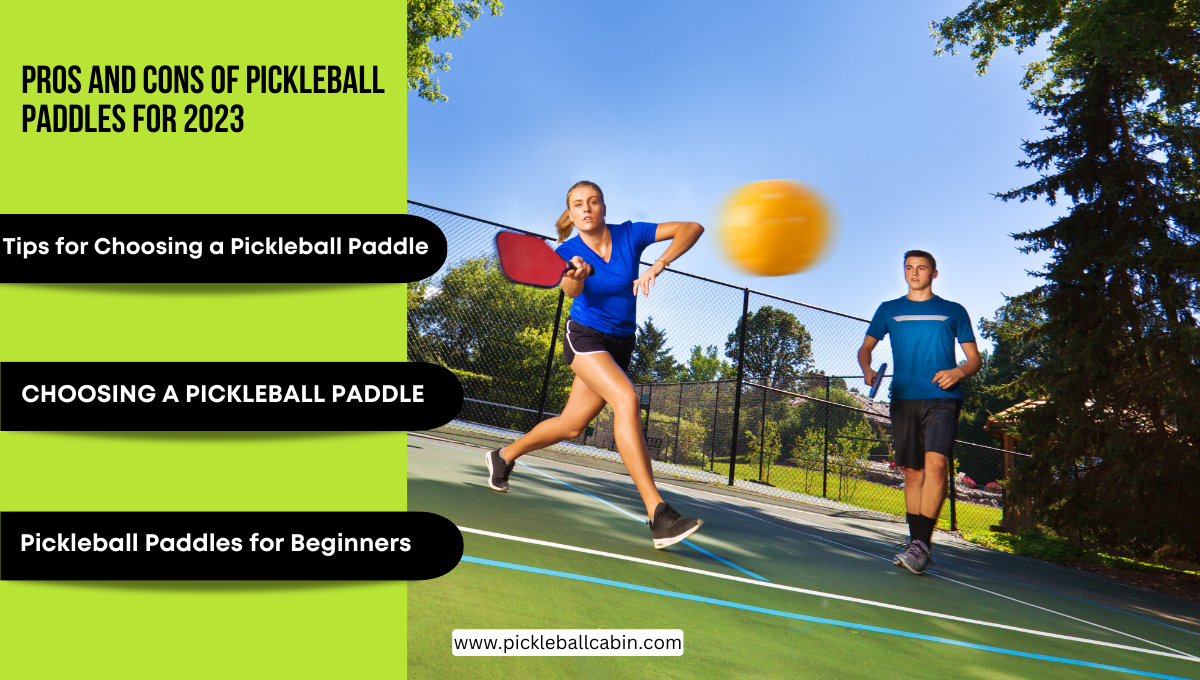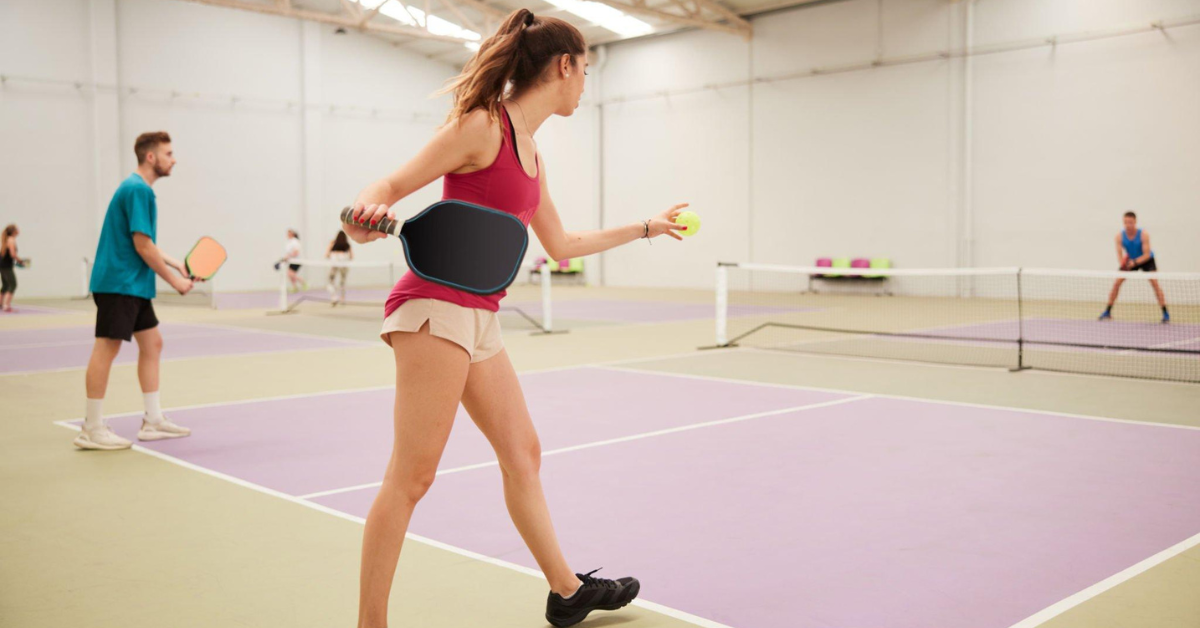Is your pickleball paddle showing signs of wear and tear? As a crucial piece of equipment in this increasingly popular sport, it’s important to recognize when your paddle has reached the end of its lifespan.
In this informative article, we will explore the factors to consider when determining if it’s time to invest in a new pickleball paddle. From spongy grips to visible damage, we’ll highlight the signs of wear and delve into performance indicators that suggest replacement.
Whether you’re a seasoned player or a beginner, understanding the longevity of your paddle is key to maintaining optimal performance on the court. Let’s dive in and discover when it’s time to say farewell to your old paddle and welcome a new one to enhance your pickleball game.
Signs of Wear and Tear
- Spongy Grip: The grip of your paddle plays a vital role in your ability to control the ball. It is essential to check if the grip has become spongy or worn out. A deteriorated grip can affect your shots and make it challenging to maintain a firm hold on the paddle during gameplay.
When the grip is no longer firm, it becomes difficult to generate power and accuracy in your shots. Consider replacing your paddle if you notice any sponginess or wear in the grip. - Dents and Cracks: Examine the surface of your paddle for any dents or cracks. These imperfections can significantly impact the performance of the paddle, as they may create dead spots or uneven bounce on the ball.
A dent or crack can alter the paddle’s structure and compromise its integrity, leading to unpredictable ball behavior during gameplay. If you notice any dents or cracks, it is a clear indication that your paddle needs to be replaced. - Delamination: Delamination occurs when the layers of your paddle separate. This can be caused by excessive use, exposure to extreme temperatures, or poor quality materials. Delamination weakens the paddle and affects its responsiveness and performance.
If you notice any signs of delamination, such as peeling or separation of the layers, it is a strong indication that your paddle has reached the end of its lifespan. - Visible Damage: Inspect the edges and corners of your paddle for any visible damage. Chips, splinters, or peeling layers are clear indicators that your paddle has seen better days.
Any visible damage compromises the structural integrity of the paddle and can lead to further deterioration during gameplay. If you observe any visible damage, it is time to retire your paddle and invest in a new one.
Performance Indicators
- Loss of Power: If you find that your shots have been losing power or not reaching the desired distance, it could be a sign that your paddle has lost its liveliness. Over time, the materials in the paddle may deteriorate, causing a significant decrease in power.
A worn-out paddle cannot generate the same amount of energy transfer to the ball, resulting in weaker shots. If you experience a consistent loss of power, it is a clear indication that it’s time for a new paddle. - Lack of Control: Has your ability to control the ball decreased? If you find that your shots are becoming inconsistent or that you’re struggling to direct the ball accurately, it may be due to a worn-out paddle.
A paddle with reduced control can greatly impact your overall performance on the court. The responsiveness and maneuverability of a paddle deteriorate over time, making it challenging to maintain precise control over your shots. If you notice a decline in control, it is a strong indication that your paddle needs replacement. - Decreased Spin: Spin is an essential element of pickleball. It allows you to manipulate the trajectory and bounce of the ball, adding versatility to your shots. If you observe that your shots lack the desired spin or that the ball is not behaving as expected, it may be time to upgrade your paddle.
An old or damaged paddle may not provide sufficient grip or surface texture to generate the desired spin. A fresh paddle with better grip and surface characteristics can improve your ability to put spin on the ball and enhance your game.
Paddle Longevity
The lifespan of a pickleball paddle can vary depending on several factors, including playing frequency and quality of materials. However, on average, a well-maintained paddle can last between 1 to 5 years. It’s important to note that even if your paddle is not showing any visible signs of wear, it may still lose its performance characteristics over time.
The materials used in the paddle gradually deteriorate, impacting its responsiveness, power, and control. Thus, it is essential to assess the paddle’s performance regularly, even if it appears to be in good condition.
Maintenance and Care
To prolong the lifespan of your pickleball paddle and maintain optimal performance, it is crucial to follow proper maintenance and care practices. Here are some tips:
- Clean Regularly: After each play session, make sure to clean your paddle thoroughly with a damp cloth. This will remove any dirt, sweat, or debris that may accumulate on the surface. Cleaning the paddle prevents the buildup of contaminants, which can affect the paddle’s grip and overall performance.
- Store Properly: When not in use, store your paddle in a cool, dry place away from direct sunlight. Extreme temperatures and prolonged exposure to sunlight can damage the materials of the paddle. Storing the paddle properly protects it from unnecessary wear and maintains its structural integrity.
- Avoid Excessive Force: While pickleball is an intense sport, try to avoid excessive force or hitting the paddle against hard surfaces. This can cause unnecessary damage and decrease the lifespan of your paddle. Treat your paddle with care to ensure it remains in optimal condition for as long as possible.
You can more in detail about maintenance and care of your pickleball paddle : Ultimate Guide to Your Paddle Safety 2023
When to Replace Your Paddle
Ultimately, the decision to replace your pickleball paddle comes down to personal preference and performance evaluation. However, if you notice any of the signs mentioned above, it’s a good indication that your paddle is reaching the end of its lifespan. Investing in a new paddle will not only enhance your game but also ensure you have the necessary tools to perform at your best.
When selecting a new paddle, consider factors such as weight, grip size, and materials. Every player has different preferences, so take the time to test out various options before making a final decision. It’s essential to find a paddle that suits your playing style and provides the desired balance of power, control, and spin.
Remember, your pickleball paddle is an essential tool that can greatly impact your performance on the court. By recognizing the signs of wear and tear and knowing when to replace your paddle, you can continue enjoying the game at its fullest potential. Regular maintenance and care practices will also ensure that your paddle remains in top condition for as long as possible, allowing you to excel in the game of pickleball.
FAQ
1. How do I know if my pickleball paddle needs to be replaced?
- Signs of wear and tear to look out for include a spongy grip, dents and cracks on the surface, delamination of layers, and visible damage like chips or peeling layers.
2. What are the performance indicators that my paddle needs replacement?
- Performance indicators that suggest it’s time for a new paddle include a loss of power in your shots, a lack of control over the ball, and a decreased ability to generate spin.
3. How long does a pickleball paddle typically last?
- On average, a well-maintained paddle can last between one to five years, depending on factors such as playing frequency and the quality of materials.
4. How can I extend the lifespan of my pickleball paddle?
- To prolong your paddle’s lifespan, it’s important to clean it regularly after each play session, store it properly in a cool, dry place away from direct sunlight, and avoid excessive force or hitting it against hard surfaces.
